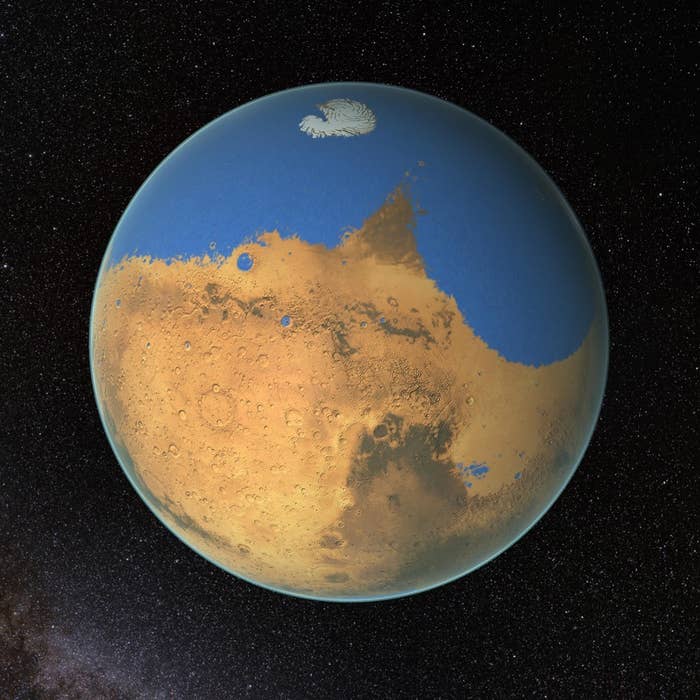Behold: what Mars may have looked like billions of years ago, according to NASA scientists.

There has been evidence that Mars had a rich topography of precipitation, but new research suggests that the Red Planet may have had even more water than our very own Arctic Ocean.
Scientists estimate that about 4.5 billion years ago, Mars had enough water to cover its whole surface, a new study published in Science magazine suggests.
Based on Mars' face today, the prime locale for the ancient ocean is the depressed land of its Northern Plains, where it would have covered 20% of the planet.
Over the span of about six years, NASA researchers used three massive telescopes in Chile and Hawaii to compare ratios of water molecules in Mars' thin atmosphere throughout its seasons.
There's H2O, as you may be well-acquainted with, which has two hydrogen atoms and one oxygen atom. Then there's HDO, which naturally occurs when a hydrogen atom is replaced with a heavier isotope called deuterium.
Because of its weight, deuterated water acts differently than normal water. As Space.com explains, the hydrogen from H2O can vaporize and take off from Mars more easily, while the deuterium stays behind.
Mars' polar ice caps were found to have so much deuterium, researchers now suspect it lost a lot of water — which could indicate the planet was wetter and habitable for a longer time than previously thought, Michael Mumma, one of the paper's authors, told NASA in a release.
So where did all that water go? Scientists speculate that as Mars' atmosphere depreciated over billions of years, it lost the heat and pressure required to keep water in its liquid form. The ocean steadily receded and condensed, and only about 13% of it remains in the ice caps, which are still visible today.

